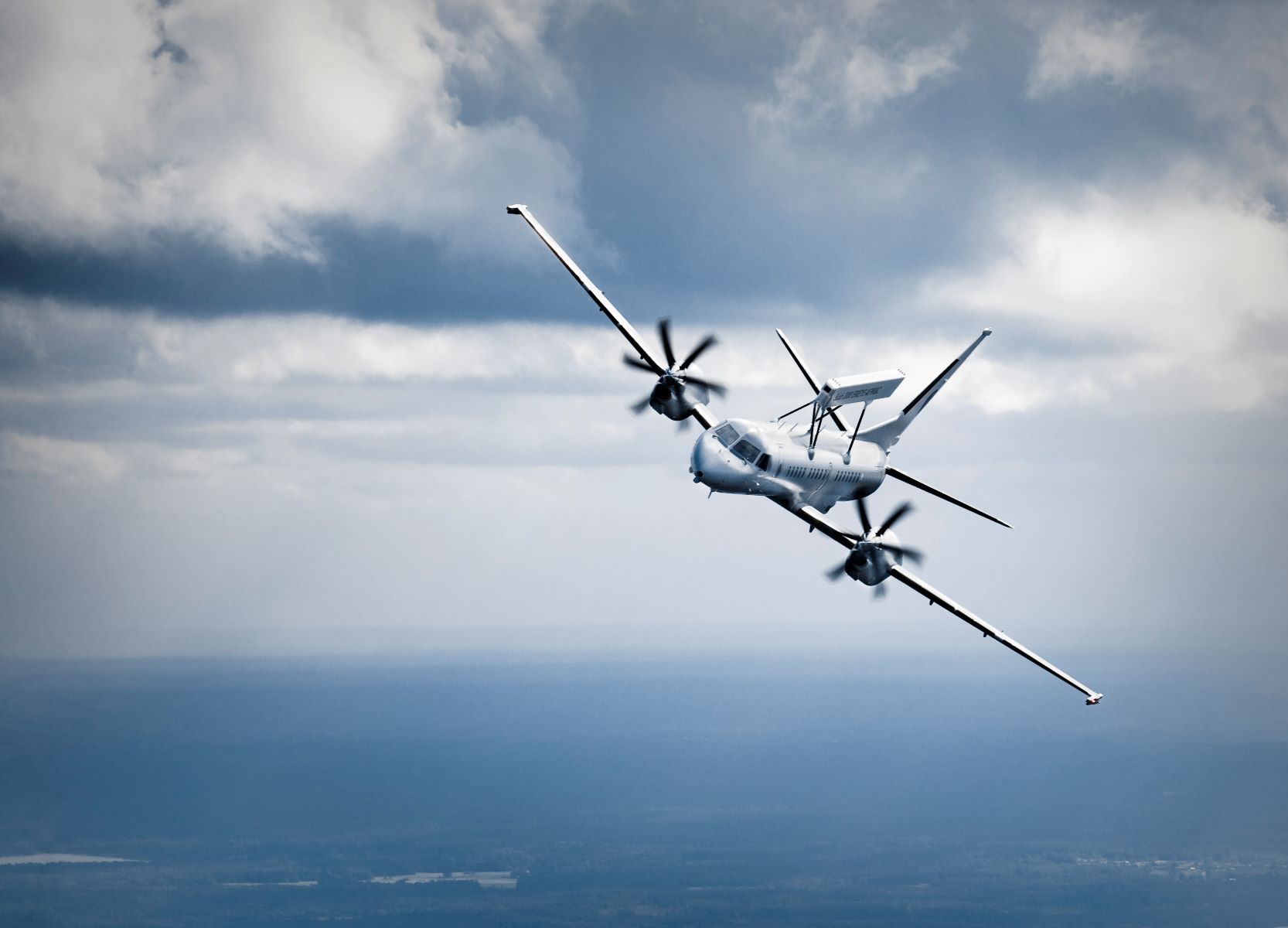
SHAH ALAM: New contract for Saab 2000 AEWC. Saab on May 18 announced a new contract for Saab 2000 Erieye Airborne Early Warning and Control AEWC. It did not identify the customer for the contract which is worth some US$160 million or around RM697 million. As per Saab press release.
Saab has signed a contract and received an order for the Airborne Early Warning and Control solution Saab 2000 Erieye AEW&C. The order value is 1.553 billion SEK. Deliveries will be made between 2020 and 2023.
The industry’s nature is such that due to circumstances concerning the product and customer, further information about the customer will not be announced.
Saab 2000 Erieye AEW&C is a complete AEW&C system with multi-role and multi-mission capabilities for both military and civil needs.
It is based on the Saab 2000 aircraft equipped with Saab’s airborne radar Erieye and a range of other sensors. The solution gives the user detailed situational awareness and can be used for tasks including border surveillance and search-and-rescue operations.
Saab will carry out the work in Gothenburg, Järfälla, Linköping, Luleå and Arboga, Sweden.
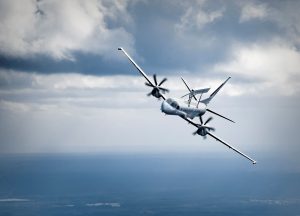
The previous user of the Saab 2000 AEWC are the Pakistani Air Force and the Royal Saudi Air Force, so it is likely that one of them is also the customer for the new order. It is interesting to note that that Saab had also marketed the Saab 2000 AEWC to Malaysia, Philippines and Indonesia previously. Thailand is the sole user of the Saab Erieye system though they chose the Saab 340 airframe instead. Thailand is hoping to upgrade the 340 AEW with new capabilities and control function in the near future.
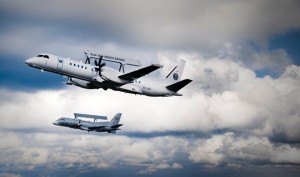
As RMAF is also interested in AEWC aicraft as well it is interesting to note that cost of the single Saab 2000 AEWC is (USD$160 million) somewhat comparable to the cost of a single Hawkeye based on the price of the four Northrop Grumman E-2D Advanced Hawkeye, around about USD$164 million each as ordered by Japan. The E-2D it must be noted is a new airframe compared to the Saab 2000 which is only available from used airframes.
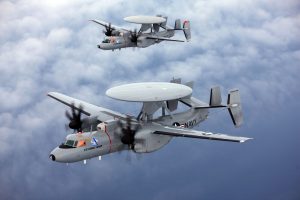
Saab Globaleye Erieye AEWC as purchased by UAE costs some USD$500 million per aircraft based on the contract cost announced in 2017. Another order for a third aircraft stated that the contract is worth $236 million though.
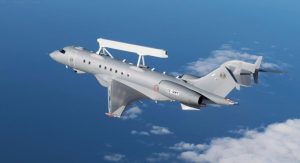
RMAF Cap 55 plan call for a squadron of AEWC aircraft well into 2030s, however, so the contract for the Saab 2000 is definitely not ours.
— Malaysian Defence
If you like this post, buy me an espresso. Paypal Payment

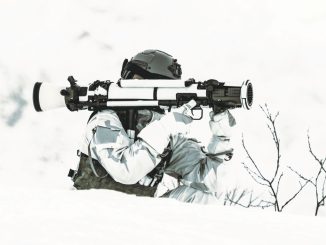


What i propose is for malaysia to get an erieye system, but instead of housing it in the saab 2000 airframe, we will use the same global 6000 airframe as the globaleye. Basically it would be a globaleye lite.
the saab 2000 can only be had secondhand, which is very hard to find now due to only a total of 63 built. The global 6000, is an upgraded global express business jet that is currently in TUDM fleet.
http://upload.wikimedia.org/wikipedia/commons/2/2a/RMAF_Global_Express_MRD.jpg
http://newsassets.cirium.com/assets/getasset.aspx?itemid=79438
See the similarity of global express and globaleye based on global 6000.
A used global 6000 costs about usd20 million now, probably around usd15 million in 2025. in my previous write here, i planned for
3x global 6000 erieye
1x global 6000 aselsan HavaSOJ airbone jammer system
2x global 6000 vip to replace existing global express and falcon 900.
all in RMK13 2026-2030.
The costs
usd 600 million for 3x erieyes
usd 150 million for the havasoj
usd 40 million for 2x used vip global 6000s.
so for tudm IMO the priority until 2030 would be
1) additional 6x EC225LP used commercial to complement the EC725
2) MALE UAV, now i am inclined to look at the bayraktar TB2. It is already operationally used, and the cost for ukraine is quite affordable imo. Ukraine bought 12 TB2 with 3 ground control stations for usd69 million.
3) LCA/LIFT. I believe we can get 2 sqn worth of LCA and 1 LIFT sqn. this my preference would be the FA/TA-50
4) AWACS in the shape of global 6000 erieyes.
5) EW jammer in the shape of global 6000 HavaSOJ.
6) additional ground surveillance radars
7) 2 more A400M from excess uk, germany or spain stocks.
http://www.defensenews.com/air/2018/09/06/northrop-grumman-secures-164m-contract-to-modify-hawkeye-aircraft-for-japan/
” …the total procurement cost for Japan for the four E-2Ds to $633 million, not inclusive of engineering and other related costs. “
For my opinion, Saab erieye system is suitable for military and civil securities purpose but E-2 Hawkeye is pure military mission and battle proven, up to Mindef to decides in term of cost, manpower and expertise.
why the HavaSOJ?
Unlike bullets, bombs or missiles, electronic attack (EA) can be considered a non-lethal way of attacking our adversary, along with cyber attack capability. We can actually use EA in military operations other than war (MOOTW), like in standoffs. Imo EA is a capability we need to have, in all branches of our military.
http://defence-blog.com/wp-content/uploads/2018/08/DkJdPKlX0AEe6qI.jpg
http://pbs.twimg.com/media/D1s96PvWkAApv4u.jpg
also why to use the global 6000?
common platform means
– larger pool of pilots with similar certification.
– same pool of ground technicians
– same spareparts for common items like tires, brakes, engines etc.
– we can cannibalise the vip aircraft if needed to enable AWAC and EW aircraft operational.
So for Rm 17mil more, we could go for brand new E-2D Hawkeye similarly used currently by USN and with the added advantage of interoperability with US made systems like our Hornets and if we ever get F-35s. And its even carrier-rated. Hmm…. sounds like its a better deal than Erieye.
@ joe
Marhalim had erred on the cost above. That usd164 million is an additional cost to an existing contract, not the total cost of that contract. That contract, in totality is up to usd1.7 billion.
http://www.dsca.mil/major-arms-sales/japan-e-2d-advanced-hawkeye-airborne-early-warning-and-control-aircraft
I don’t think we can ever afford the E-2D Advanced Hawkeye.
Anyway, the Erieye is already combat proven with Pakistan air force, a fellow service that we can learn from in operating the Erieye.
Reply
I don’t think I erred, the DSCS announcement as usual put the whole total package, and the final contract price usually much lower than the announcement. The Defence News story had superseded the DSCA announcement. Of course a user without any experience on a particular aircraft will likely incur higher costs compared to an experienced user like Japan
Just heard from the Janes defence but il bet It would send to pakistan or South America IMO.
BTW, did Northrop Grumman ever offer the Advance Hawkeye to malaysia ?
Reply
Not the latest version as we have not indicated we want them but when we were looking for AEW in the past, yes, had offered the Hawkeyes to us
Joe,
Why on earth would you want the F 35 for RMAF?
Clearly you have not been following all the mishaps that LM are covering up in regards to the F35 debacle.
@ marhalim
Please re-read carefully the defence news article.
” Northrop Grumman has been awarded a $164 million firm-fixed-price MODIFICATION TO AN EXISTING CONTRACT for a new-build E-2D Advanced Hawkeye aircraft ”
http://www.defensenews.com/air/2018/09/06/northrop-grumman-secures-164m-contract-to-modify-hawkeye-aircraft-for-japan/
” …the total procurement cost for Japan for the four E-2Ds to $633 million, not inclusive of engineering and other related costs. ”
USD 633 million is the contract price up to the date of the article, still not including a lot of other costs, like engineering and other related costs.
Sorry for the comment, just want your article to be more accurate.
Reply
It is accurate, the price for one Japan Hawkeye is USD 164 million, its fixed firm price contract. that’s the fly away price of the aircraft. The engineering costs will be paid by US Navy
@…
I would choose to side with Marhalim since he is the news provider so the onus of verity should be onto him and I trust with his journalistic background, he had done his due diligence. Unless he has made mistake and owned up, I stand corrected.
@Melayu Ketinggalan
I am well aware the plane is Windows10 of the skies but it is the best that anyone could buy now and in the foreseeable future, as USA has a real stake in it and they will do all they can to maintain its advantage and the fact is, it has grew too big to fail. Whether we can eventually afford it or not is another matter. What I pointed is just a plausible scenario which makes the advantages of Hawkeye option more obvious.
Still years before we need this kind of platform but it a smart thing to start evaluating from now.Maybe when we need them later, hopefully we can get 1 or 2 globaleye outright with erieye er radar suite at a lower price of course (if it ever happen lol).Can swing role and future proof too.AWACS and MPA in one platform is kinda tempting right? or is this approach is not proven yet or not really feasible for us?
Firdaus – “Still years before we need this kind of platform””
Actually the RMAF first started seeking a AEW platform as far back as the mid – 1980’s.
We can upgrade our fighters all want and even at some point in the future get MRCAs but the missing element will remain a AEW platform.
Melayu Ketinggalan – “Clearly you have not been following all the mishaps that LM are covering up in regards to the F35 debacle.””
Name me a single fighter/bomber programme (F-14, F-15, B-1.
F-16, F-111, Tornado, Starfiighter, etc) that was not hit by technical difficulties, cost overruns, delays, etc.
The F-35 and others like it are the way of the future. “low observable” (a better word than stealth which itself isn’t a panacea) platforms designed from the onset to be operated at a systems level as opposed to a platform level.
My bad i mean before we are able to buy this platform cuz lets be real here, rmaf must prioritize other assets procument like LCAs, Uav, Ground Radar and nuri replacement programme first before they can turn their attention into aewcs platform..This priority procurement will at the very least take 2 RMK = 10 years to finish..But i cant deny that RMAF kinda in need of this awacs equipment..
@Joe – Noted on your POV regarding the F 35 but I will stay on the fence regarding the plane that can’t do anything right.
@Azlan – What makes you think stealth is the way in the future?
LM states that it is stealthy but we don’t know if it is true or not and further more countries like Russia and China are constantly upgrading and creating new anti stealth radars to counter these so called stealthy aircrafts.
Malaysia does not need stealthy jet fighters as we want to only defend our air space from foreign threats.
Multirole and affordable jet fighters like the F 16 (as an example) should be enough to deter and defend.
Stealthy aircrafts are needed for countries that wants to attack/invade other countries such as USA and its Western coalitions for oil and its mineral sources.
F 35 not only is prohibitively expensive to procure but it is also expensive to maintain especially regarding the stealth coating and it works only when it is accompanied by a secondary jet fighter.
USA – F 35 accompanied by the F 22, F 18 and/or F 16.
All other countries that have purchased or are getting the F 35 are users of the F 16 (also made by LM).
Netherlands, Belgium, Norway and Denmark are replacing their F 16s with the F 35s.
Greece wants to get the F 35 to complement its F 16 fleet.
Turkey also was supposed to get the F 35 but got kicked out for purchasing the S 400 from Russia. Turkey is a F 16 user.
Singapore is getting the F 35. They’re also F 16 user.
Both Japan and South Korea purchased F 35 because they’re also F 16 users; Japan version is called the F 2.
Poland also recently signed agreement to get F 35. They’re also F 16 user.
Both Italy and UK have purchased the F 35 B because both used to fly the Harrier.
Taiwan wants the F 35 B but USA declined in order not to upset China.
Both Singapore and Taiwan understandably wants the F 35 B because of its flexibility to be deployed anywhere from their respective island states in case the air force runways are bombed by foreign fighters.
So tell me Azlan, can Malaysia afford to buy the F 35 when we don’t even have the facility and infrastructure and even the experience to own and fly the F 16?
Just my 5 sen.
“Malaysia does not need stealthy jet fighters as we want to only defend our air space from foreign threats“
It’s not the F-35’s “stealthy” features that makes it different but various factors; namely the fact that incorporates stuff not available on legacy platforms and the fact that it’s intended to be operated as part of a integrated network also comprising new assets.
“So tell me Azlan, can Malaysia afford to buy the F 35””
If we’re going to limit our discussions to what we can currently afford then there wouldn’t be very much for us to talk about now would there?
“All other countries that have purchased or are getting the F 35 are users of the F 16 (also made by LM”
For the very obvious reason that all are either U.S. treaty allies or are aligned to the U.S. and are already operating U.S. aircraft. Naturally they’d want the F-35 for a number of reasons – not that they’re spoilt for choice anyway
“works only when it is accompanied by a secondary jet fighter””
No ….. It works when it’s operating as part of a networked environment.
“Stealthy aircrafts are needed for countries that wants to attack/invade other countries such as USA and its Western coalitions for oil and its mineral sources.””
How on earth did you reach this conclusion?
First of all “stealth” (LO is a more accurate term) is not a panacea; doesn’t make a figure totally undetectable. It’s the fighter’s LO features together with various other factors that delivers the results.
“Both Singapore and Taiwan understandably wants the F 35 B because of its flexibility to be deployed anywhere””
That’s a very simplistic view.
Taiwan needs it because it desires the ability to maintain some level of superiority over China. Whether edge Taiwan has/had in technology is rapidly narrowing; of course it would want the F-35. Taiwan for decades operated on the basis that although it has a numerical inferiority with China; it had a technological superiority; this is no longer the case.
Singapore wants it because it’s policy is to maintain a technological edge over its neighbours and going for the F-35 is the obvious step as part of its plans to take the RSAF to a new level by replacing what it currently has with something superior.
Note that I’m not suggesting we need a LO aircraft now or that it has to be the F-35; only that at one point in the future we’ll have to go for a current gen platform in other to avoid block obsolescence.
Melayu Ketinggalan “LM states that it is stealthy but we don’t know if it is true or not and further more countries like Russia and China are constantly upgrading and creating new anti stealth radars to counter these so called stealthy aircrafts. ”
“Stealthy aircrafts are needed for countries that wants to attack/invade other countries such as USA and its Western coalitions for oil and its mineral sources.”
By your logic, Russia, China, Korea and Turkey would not be developing stealth aircraft of their own.
Stealth is not absolute. It does not prevent detection at every angle or every distance, but reduces the distance at which you can detect, classify or engage a stealth platform. By which time the aircraft have evaded or killed you.
But stealth is only one quality. Even a hypothetical non-stealthy F-35 would be wonderful to have because of the information it is able to collect, integrate and distribute to other users.
“Multirole and affordable jet fighters like the F 16 (as an example) should be enough to deter and defend.”
Even though we intend to get the LCA, we still consider it necessary to have an MRCA.
“F 35 not only is prohibitively expensive to procure but it is also expensive to maintain especially regarding the stealth coating”
Too bad. Many other things are expensive.
“can Malaysia afford to buy the F 35 when we don’t even have the facility and infrastructure and even the experience to own and fly the F 16?”
What are you talking about? Obviously we can’t afford to buy the F-35 (nobody even said we can or we should), and obviously we have for many years operated several more expensive fighter types than the F-16.
“All other countries that have purchased or are getting the F 35 are users of the F 16 (also made by LM).”
Strange logic, but I want to ask you- where’s Australia? Where are the USN and USMC F-16s?
Azlan – You went all the way to rebutt what I had said only to conclude in your last paragraph that in the end you suggest Malaysia doesn’t need the F 35.
AM – Yes it is strange even to me why Australia opted for the F 35 but then again both Australia and UK has never operated the F 16 beforehand so it all comes down to the US lobby and knowing those 2 are strong allies in past US wars.
Furthermore Australia was granted the EA Growler by the US Congress which further shows the favoritism shown.
Fun fact – USN aviatore DO FLY the
F 16s as it is used as aggressors (painted in Russia camouflage) for training purposes.
And did you know it was USMC that lobbied for the inception of the F 35 in the beginning?
As USMC operates ex UK Harriers and they wanted a replacement for it.
Both USN and USAF rejected the F 35 concept from the beginning but the LM lobby is very strong in the Congress so there you go.
Please note that even tho the USN has the F 35 C then why the heck are they still ordering Super Hornets Block 3 for the Navy and USAF operates the F 35 A but they’re still using both F 16s and the F 15 Es and have ordered the F 15 X.
So that means something doesn’t add up with the F 35.
Case closed. Thank you.
““F 35 not only is prohibitively expensive to procure but it is also expensive to maintain“”
Whether it’s a MBT, IFV, fighter or UAS; everything is getting increasingly expensive to buy, run and support; on account on the increased electronics/avionics/systems which all require their own test/support kits and a higher level of manpower to operate and maintain.
Melayu Ketinggalan “Yes it is strange even to me why Australia opted for the F 35 ”
Is it written anywhere that an F-35 operator must operate the F-16 first?
Irony is when you claim we lack the “experience” or “infrastructure” to operate the F-16 but have operated more complex aircraft for years now., but now you don’t want to talk about it.
Or when you claim some countries believe stealth can be easily defeated but are busily developing their own stealth aircraft.
“Both USN and USAF rejected the F 35 concept from the beginning but the LM lobby is very strong in the Congress so there you go. ”
In the first place, there was no “F-35 concept.” There was only the JSF concept which defined all the requirements, including the STOVL requirement, long before the competition was opened to Boeing and LM.
“Please note that even tho the USN has the F 35 C then why the heck are they still ordering Super Hornets Block 3 for the Navy and USAF operates the F 35 A but they’re still using both F 16s and the F 15 Es and have ordered the F 15 X. ”
Well, you claimed that stealth aircraft are very expensive and are not needed for all roles. Does that answer your question?
Case closed. Thank you.
Azlan – That’s a given, same like our own cars but please do not divert from us talking about the F 35 for Malaysia.
Why would you want a bomber for RMAF?
Did you know that stealth coating is also expensive?
Please would like to hear your thoughts on this.
“Why would you want a bomber for RMAF?””
When and where did I say this?
“Did you know that stealth coating is also expensive?””
It’s a combination of various things – not just the stealth coating – that makes 5th generation platforms expensive?
“s but please do not divert from us talking about the F 35 for Malaysia””
I’m not “diverting” anything and I’m not talking about the F-35 per see; you are. Nobody is suggesting we rush into it now or that we can afford it.
You’ve made several assumptions or misconceptions about LO aircraft that are simple untrue…..
“your last paragraph that in the end you suggest Malaysia doesn’t need the F 35”
Wrong ….
I clearly said we don’t need it at present; not that we’ll never have a need for a 5th gen LO platform in the future. If you want to form conclusions as to comments made by others; at least form the right ones.
@Melayu Ketinggalan
I think the F-35 is too expensive for us. The Super Hornet alone costs around USD70 mil, while F-35C costs around USD100 milion.
The JSF concept itself was quite ambitious; a common airframe for all services, stealthy, cheap enough to be procured in large numbers (to replace the F-16s) by the US and its allies. I believe the US was hoping to replicate commercial success of the F-16 back in the 90s to offset the unit cost. That wasn’t the case as LM found out the difficulty in designing an aircraft that could meet the wildly different requirements of the USAF, USN and USMC.
@ marhalim
How many AEWC aircraft is RMAF planning on getting? And any updates whether it’s getting through?
ASM – “? And any updates whether it’s getting through?””
It’s not in the RMAF’s present wish list and the requirement hasn’t even been registered or approved.
ASM – “think the F-35 is too expensive for us””
Of course it is but we have no intent on buying it.
ASM – “ That wasn’t the case as LM found out the difficulty in designing an aircraft that could meet the wildly””
Maybe but if we look at past programmes that were just as ambitious; they also suffered from their share of technical issues, delays and overruns. There are lots of parallels. For me it’s surprising that the F-35 has been hit by various issues. To be expected given the scope, complexity and the various new technologies involved.
ASM “The JSF concept itself was quite ambitious; a common airframe for all services, stealthy, cheap enough to be procured in large numbers (to replace the F-16s) by the US and its allies. I believe the US was hoping to replicate commercial success of the F-16 back in the 90s to offset the unit cost. That wasn’t the case as LM found out the difficulty in designing an aircraft that could meet the wildly different requirements of the USAF, USN and USMC.”
A few things have changed since the time the JSF concept was defined.
The JSF was intended to be a relatively numerous and affordable workhorse aircraft, filling the lower end of a high-low mix in with the F-22. The high cost of the F-22 led to production being stopped only at 187 units. Meaning the USAF has to rely on F-35 for more tasks than was intended, including high end air superiority tasks for which the F-22 was intended.
The USN pursued the NATF and A/F-X prrogrammes that were stopped following the end of the Cold War. As a result the Navy pursued a JSF + F/A-18E force structure.
The USMC wanted STOVL capability to assure the future of the fast jet component of its air wings. This was accepted as the JSF was not intended to be the top end air superiority fighter and development problems with STOVL had not yet been encountered.
The large STOVL engine enlarged the frontal cross section of the aircraft and hence limited its top speed., and limited the aircraft to having one engine. This was accepted because JSF was originally intended for CAS and interdiction- for which STOVL was useful for dispersed operations. As a result the wings were swept less sharply than for a higher speed design. If designed for today’s anticipated Pacific battlefields, the aircraft would probably have a longer range and higher speed, two engines and greater internal stores carriage.
Despite the design compromises, STOVL has produced some unintended but positive outcomes. New missile capabilities against bases and ships have prompted a move towards disaggregation and distributed operations. The F-35B allows operations from small dispersed bases and the use of LHAs under the Lightning Carrier concept, contributing to air superiority and sea control whereas they were once limited to the capabilities of Harriers and helicopters. Countries with small STOVL carriers or LHDs can acquire supercarrier-like capability and can train cross-deck with the USN. Small forward bases can pose an anti-shipping threat when F-35Bs carry LRASM.
As Azlan said, the F-35’s value is not in its qualities as an individual aircraft, but when used in its place in a system. It has unprecedented ability to collect, organise and distribute information to other users, which could be anything from other aircraft to ground combat units, F-35s belonging to other countries, CEC equipped ships, land based missile batteries and so on.
These information-clearing capabilities were never intended or imagined to come from the small, affordable platform that JSF defined in the 90s. So while the F-35 has had a long and expensive development, it would not be accurate to attribute the additional cost to these problems.
@ marhalim
I stand corrected. But that value is only for the aircraft and not inclusive of plenty of other things that is needed to operate the capability. As you said japan is already an existing Hawkeye operator, and most of its current support systems for E-2C can be reused for the E-2D.
We cannot expect as a new AWACS operator we can spend only that much for the capability. Why I have budgeted usd600 million for 3 AWACS.
Unless our military is seamlessly integrated with the us military like Japan, It would probably be much more easier if we go for non-us AWACS system. SAAB has provided plenty of EW systems for Malaysia, including our EW threat library system and training. The Erieye system has been used operationally by Sweden, UAE, Thailand, Pakistan, Saudi, Brazil, Mexico and Greece.
@ firdaus
If we want the capability before 2030, we need to plan for it now. For me I would prefer the AWACS and MPA to be on 2 different aircraft. 1 plane cannot be at 2 different locations at the same time. UAE has a smaller sea area than malaysia to look for, which would be ideal for them to have both AWACS and MPA capability in one platform. Then there is the EA capability that we need to address too. With the availability of the AWACS system, we need to also improve on our air policing strategy. AWACS can detect, but our fighters need to be there to investigate the aircrafts and ships detected by our AWACS. Right now data transfer can be done with existing SDR radios (using software systems like the R and S SECOS)
But am not sure if this is enough or we still need to have secure encrypted national data links similar to the link 16 in the future. I believe this has been thought of in our NCO plans.
@ melayu ketinggalan
If you say no to F-35, what is your substitute for that? What do you want for our future MRCA around 2030-2035?
Why is stealth important? Because you depend so much on radar. It is like your eyes. When radar cannot detect the F-35, it is almost like you are blind, you dont know where your opponent is. While the F-35 with its advanced AESA LPI radar, can pick out any non-stealth fighter while itself cannot be detected. By 2030, we will have quite a number of 5th gen fighters in our region. Can we defend our airspace then without a 5th gen fighter with stealth features?
So a country’s ability to operate the F-35 is not decided only by whether it can afford it or handle the technical complexity, but mainly whether the services can make the organisational changes to fully utilise its capabilities.
The same applies to almost any asset with significant information gathering capability, whether a frigate, UAV, MPA or AEW.
@Azlan
“It’s not in the RMAF’s present wish list and the requirement hasn’t even been registered or approved.”
Wooppss…I might have confused this for the MPA.
“Maybe but if we look at past programmes that were just as ambitious; they also suffered from their share of technical issues, delays and overruns. There are lots of parallels. For me it’s surprising that the F-35 has been hit by various issues. To be expected given the scope, complexity and the various new technologies involved.”
Agreed. Actually I was a bit surprised that the Americans went for one size fits all combat aircraft concept, knowing that mission requirements, doctrine and operations of each service are way different from one another. It would have been less of headache if they went for different designs but with commonality with one other (engines, avionics, etc).
F-111 was such case where it worked for the USAF but have to be reworked into the F-14 for the USN
Correction.
“For me it’s “hardly” surprising that the F-35 has been hit by various issues”
The plain fact is that the nature of warfare is rapidly changing. The RNAF is trying its best to make the transition from a platform to a network centric air arm but as always funding is the core issue.
Air warfare is no longer about which platform has the radar with the longest range or the one which has the best performing ordnance; it’s about who has the better SA: something which hasn’t changed from the days of the Red Baron. It’s all about who has the superior SA and who can better apply it to maximum advantage.
Never mind the RSAF; the RTAF with its Gripen/Eriye combo is way ahead of us.
@Melayu Ketinggalan
Regardless, take a look at the platforms themselves:
Falcon is 46 years old.
Hornet is 41 years old.
Typhoon is 35 years old.
Rafale is 34 years old.
Super Hornet is 25 years old.
Newer plane designs and tech have rendered these platforms to a somewhat disadvantage of today and in 15-20 years time, totally irrelevant at frontlines. As you’re aware, we don’t buy high tech planes very often and whatever we buy we use for a very long time, so when we do spend money we’d have to make sure we buy something with high future-proofing. We can and should buy cheaply available planes to tide us for the meantime but our future big ticket buy should be something that wouldn’t be obsoleting in the next couple decades, the reason why I had disagreed getting either 4.5gens Rafale or Typhoon or Super Hornet.